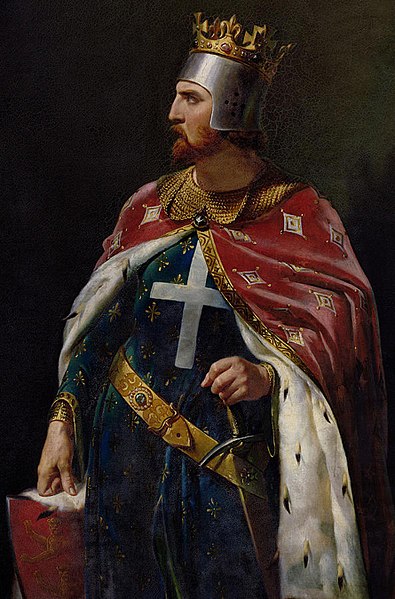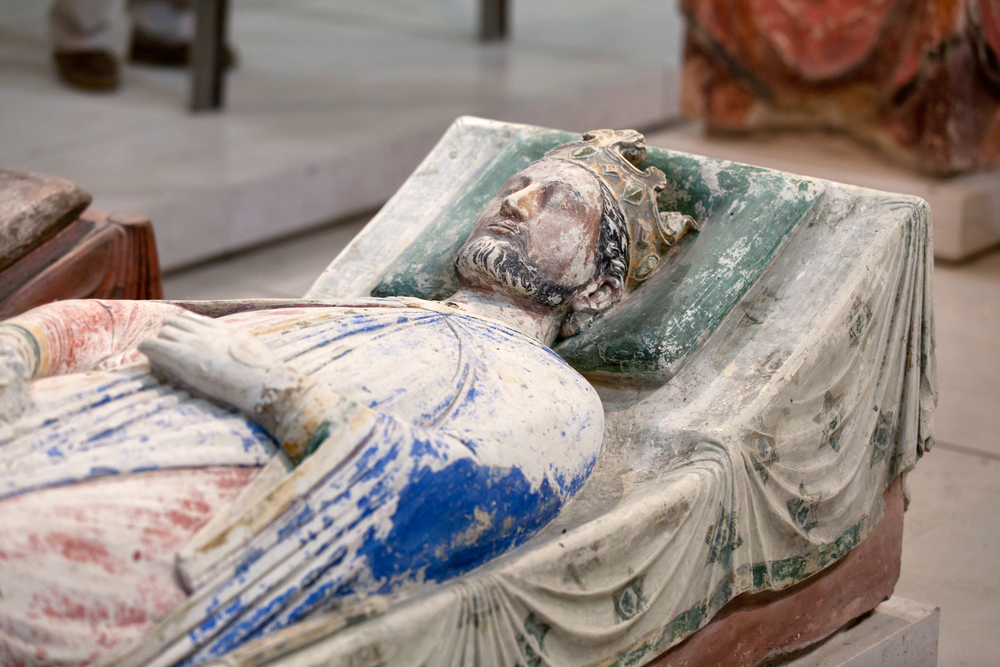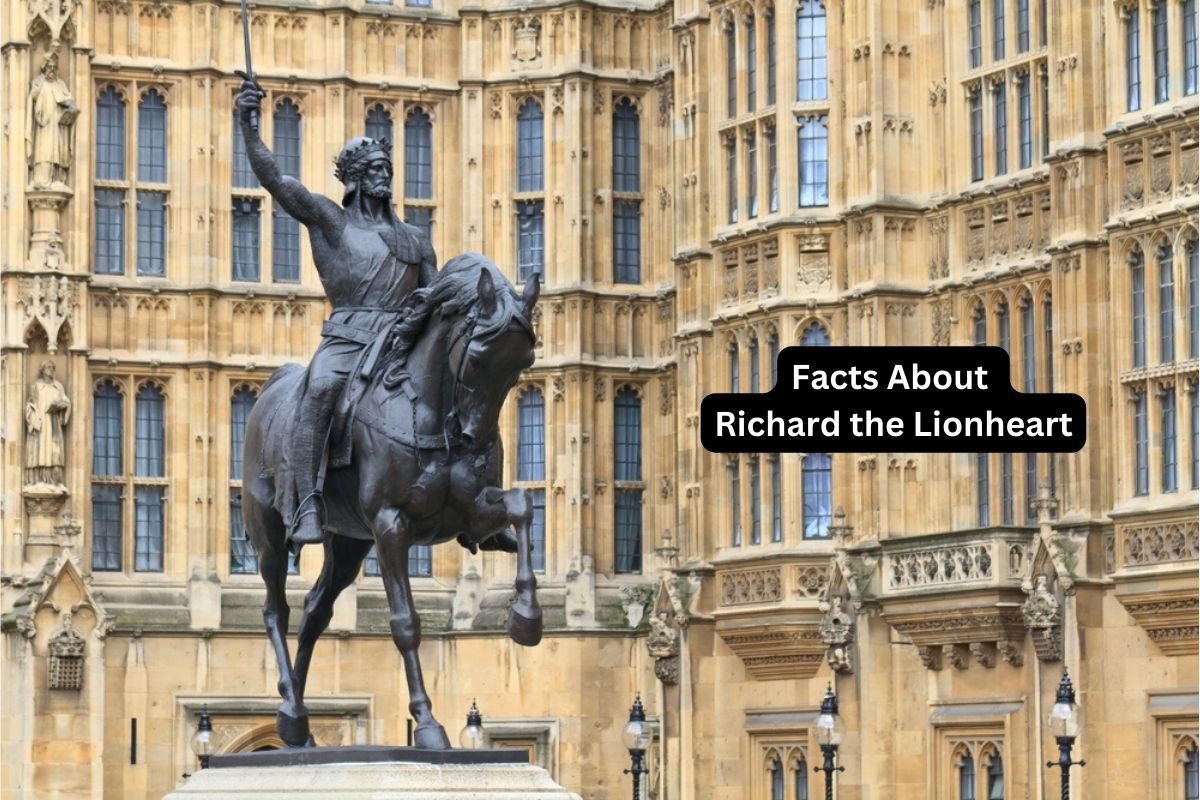Richard the Lionheart, born in 1157, was a medieval monarch and the son of King Henry II and Queen Eleanor of Aquitaine.
His fearless bravery in battle earned him the nickname “Lionheart.”
He ruled England for a brief but eventful decade, from 1189 to 1199, and is most renowned for his leadership in the Third Crusade.
Richard’s legacy is deeply intertwined with chivalry, the code of knighthood, and his pivotal role in medieval European history.
Richard the Lionheart Facts
1. Born on September 8, 1157, in Oxford, England
Richard the Lionheart was born into the royal Plantagenet family as the third son of King Henry II and Queen Eleanor of Aquitaine.
Also Read: Middle Ages Timeline
His birthplace, Oxford, was a significant center of learning in medieval England, and his family was known for their extensive lands and political power.

2. Nicknamed “Lionheart” for his bravery
Richard earned the epithet “Lionheart” due to his remarkable courage and valor on the battlefield.
Also Read: King John Facts
He became a symbol of knightly prowess, and his reputation for fearlessness in combat was widely celebrated throughout medieval Europe.
This nickname reflects his strong and bold character, which was a defining feature of his reign.
3. Inherited the vast Angevin Empire
Richard’s accession to the throne of England came with a vast and complex empire known as the Angevin Empire. This realm included not only England but also substantial territories in France, such as Aquitaine, Normandy, and Anjou.
This inheritance gave Richard significant political and military influence in Western Europe, but it also presented challenges in terms of governance and diplomacy.
4. Played a crucial role in the Third Crusade
Richard the Lionheart is perhaps most renowned for his pivotal role in the Third Crusade (1189-1192). This was a major Christian military campaign aimed at recapturing the holy city of Jerusalem from Saladin, the Muslim leader.
Richard, along with other European monarchs like King Philip II of France and Emperor Frederick I of the Holy Roman Empire, led the Christian forces.
Richard’s military leadership was instrumental in several key victories, including the Battle of Arsuf and the capture of the important coastal city of Jaffa. However, the crusaders did not fully achieve their ultimate goal of retaking Jerusalem.
5. Spent over a year in captivity during his reign
While returning from the Holy Land, Richard was captured by Leopold V, Duke of Austria, in 1192. He was subsequently handed over to Holy Roman Emperor Henry VI.
Richard’s captivity lasted more than a year, during which a substantial ransom was raised for his release. His time in captivity was a significant event in his life and had political and financial implications for England and his family.
6. Ruled as King of England from 1189 to 1199
Richard’s reign as King of England was relatively short, lasting from 1189 to 1199. During this time, he spent a significant portion away from England, primarily participating in the Third Crusade and later being held in captivity.
Despite his limited presence in England, his reputation as a warrior king and his impact on the country’s legal system left a lasting legacy. He introduced some legal reforms aimed at strengthening the rule of law in his kingdom and promoted the ideals of chivalry and knighthood.

7. Promoted chivalry and knighthood
Richard the Lionheart was a staunch supporter and embodiment of the chivalric code and the ideals of knighthood. He believed in the importance of honor, bravery, and loyalty among knights.
Richard’s own actions on the battlefield, his adherence to the code of chivalry, and his reputation as a fearless warrior made him a role model for knights of his era. His promotion of chivalry contributed to its enduring legacy in medieval European culture.
8. Introduced legal reforms in England
During his brief reign, Richard implemented some legal reforms in England. While these reforms were not extensive, they aimed to enhance the rule of law.
One notable contribution was his issuance of the “Coronation Charter of 1189,” which sought to limit the power of the monarchy and provide certain legal protections to English subjects.
Richard’s efforts in this regard laid the foundation for future developments in English legal and constitutional history.
9. Had a turbulent relationship with his brother John
Richard the Lionheart had a complex and often tumultuous relationship with his younger brother, John. Their rivalry and conflicts over inheritance and power were a significant part of their lives.
Richard even named John as his successor while he was on his deathbed, despite their strained relationship. John would go on to become King John of England, and their familial conflicts continued to shape English history during John’s reign.
10. Died on April 6, 1199, from wounds sustained in battle.
Richard the Lionheart met his end in the castle of Châlus-Chabrol in France. He was fatally wounded by a crossbow bolt while besieging the castle. Despite the wound, he initially continued to lead his troops in the siege but eventually succumbed to his injuries.
Richard’s death marked the end of an era, as his brother John succeeded him as King of England and faced the challenges of governing the Angevin Empire.
